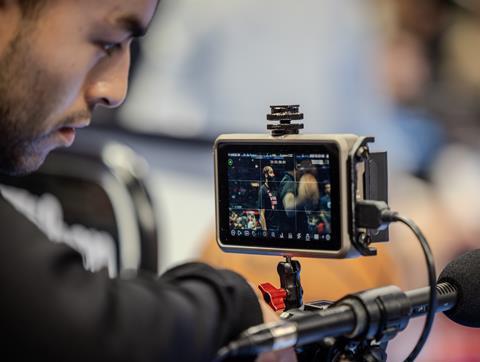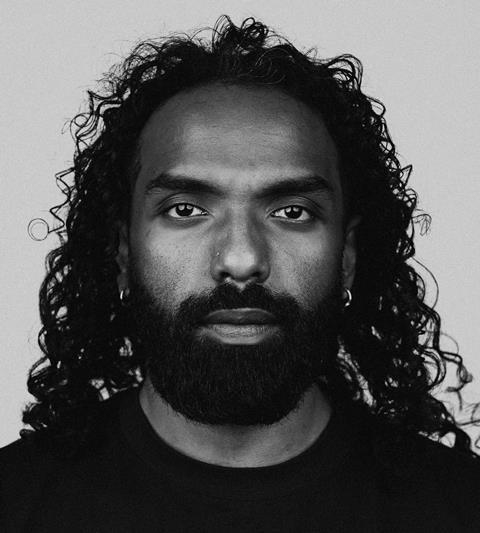Shaki Prasanna, Atomos creative collaboration director, looks at how broadcasters and production companies can keep up with new forms of content

We’re living in an age of hyper-convenience, where information and services are available everywhere, and at any time. Portability is paramount for Gen Z: smartphones are their main access point for entertainment and communication and, increasingly, this younger generation does not distinguish between types of media or sources of entertainment. It’s all just “content,” constantly available at their fingertips. But how are broadcasters and media organizations adapting to this on-demand, multi-platform reality?
The video-first generation
Millennials have grown up with social media, but Gen Z is arguably the only generation with a “video-first” view of social interaction. We’ve long known that video is more engaging and easier to passively consume than text, but the immediacy and ubiquity of smartphones have made “always on, always new” video consumption a reality. Correlation is not the same as causation, but today’s media consumption suggests that viewers have shorter attention spans. Perhaps counter-intuitively, this doesn’t mean diminished overall screen time. A recent US-based survey found that Gen Z registered an average of over six hours of daily smartphone use.
With such a willing and captive audience, and a verified high demand for short-form video, broadcasters can capitalize on social media’s high availability and immediacy. Of course, fulfilling this demand necessitates new ways to produce content, tailoring it for modern viewing habits while maintaining its relevance, creativity, and production quality. Doing this well calls for more efficient workflows that can lead to rapid content publishing. And that’s exactly what has happened: for the first time, production workflows go all the way to delivery.
From lens to likes
With Gen Z’s granular delivery expectations, connected production and post-production technology can usefully complement traditional broadcast techniques. If your story is published first, you will get most views. But faster workflows don’t have to replace conventional ones, they can be a vital supplement to them. With Camera to Cloud (C2C) and modern, super-efficient codecs like HEVC/H.265, you can get live action posted online within minutes. It’s what we call “From Lens to Likes.”
Production teams at the UK’s BRIT Awards and the Sundance Film Festival in Utah both had Atomos C2C at the heart of their productions. They sent footage to the cloud as it was captured so that editors and other post-production professionals could work in parallel and do so within seconds of the shots arriving. The editors were able to clip and brand the content and—crucially— make as many versions as necessary to meet the viewers’ profiles, including multiple screen aspect ratios.
Keeping content bite-sized
Content providers are rethinking how they reach their audiences and adapting to multi-platform consumption and the demand for bite-sized content. Modern production methodologies and collaborative post-production can extract more usable content from existing or mildly augmented footage. It’s easy to package BTS shots with actors’ and directors’ voice-overs and mix these with trailers and previews. There’s also a place for User-Generated Content (UGC), some of which rivals or even exceeds broadcast standards. Advertisers have had to change, too, with shorter commercials to match viewers’ attention spans. TikTok has encouraged this trend, influencing viewer preferences.
Even the likes of Netflix are producing shorter trailers to fit the social platforms’ enforced brevity - and it’s effective. Short-form content is ideal for quick consumption, followed by enthusiastic sharing. Production pitching requirements now encourage material suitable for consumption while viewers are “second screening.” This kind of multitasking might not be ideal from an artistic point of view, but it is a reality - one that can’t be easily ignored.
Broadcasters as creators
There’s now a slightly awkward stand-off between broadcasters-as-creators and creators themselves. This is hard to define exactly. Demand has always influenced creative supply. Even in the 1970s, sitcom scripts had to be relevant and understandable to contemporary audiences. There wasn’t even a 1/100th of the choice, but viewers would switch channels if they didn’t like what they were seeing. Today’s degree of choice is off the scale, with plentiful content even for micro-niches.
A pessimistic view of the future might suggest that broadcasters’ only solution to keeping up with the ever-increasing demand for content is to take an algorithmic approach, aided and abetted by AI - an outcome that seems much more than a mere possibility.
But there are better possible outcomes for creators - both for large teams and individuals. While it is very easy to slip into a passive, algorithmic social media habit, Gen Z - who are sometimes subject to unfair and inaccurate over-generalizations—are still fully-fledged human beings with an appetite for original, well-considered, and timely content: traditional content, in other words. Sure, creators can take part in the social media whirlwind: most of the time, it’s fun and informative. But at the same time, and especially with new and affordable technology leveling the production playing field, there are more creative possibilities for emerging young artists and creative professionals than ever. Let’s not forget that we’re in a golden age for talented filmmakers.

Shaki Prasanna is creative collaboration director at Atomos




No comments yet